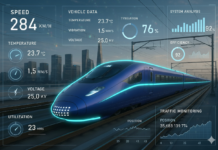
2.77 billion. That was the total number of passenger trips taken by rail in China. For context, all of the world’s airlines carried a total of 3.7 billion passengers in 2016. Meanwhile across Southeast Asia, the long-discussed plans for a pan-regional rail network are edging closer to reality – with conversations about the high-speed rail between Bangkok and Kuala Lumpur being restarted and the game-changing high-speed rail linking Kuala Lumpur to Singapore scheduled for completed by 2026. Even in India, where rail has been the dominant mode of transport, we are seeing on going developments such as the proposal for the country’s first high-speed rail corridor which is set to transform travel time and rail experience.
This resurgence of rail coincides with the rapid growth and evolution of the wider Asia Pacific travel market. With the booming travel market in the region, there is huge potential for rail to play an ever greater role as an alternative to air travel. But how can rail operators effectively tap the region’s potential and have a larger slice of the market share? Amadeus recently interviewed representatives from Asia Pacific rail operators, international leisure and corporate travel agents and industry experts this year and identified five make or break factors to unlock the potential of rail travel. There are the five:
1. Capturing customers old and new
Rail operators are jostling for the attention of travellers in an increasingly competitive landscape filled with more transport options than ever before. Marketing and merchandising need to become a priority when it comes to engaging and familiarising travellers with the services and conveniences of rail. Ticketing should also extend beyond existing closed channels and be more accessible to travellers across various platforms and devices.
2. Make timetables, booking, and data universally available
The biggest barrier for travellers choosing rail is the difficulty to access and understand rail timetables and booking information. In view of the strong movement towards self-managed travel, travellers should have the option to book their flight, hotel, and train ticket—at the same time, from the same platform. The integration of rail content in Global Distribution Systems is a crucial step to making this a reality. Rail operators need to take a customer-centric approach and start collaborating towards a true and unique multi-channel, multi-modal and multi-country offering.
3. Mobile is a must
Asia Pacific is arguably the most tech-savvy region, with an estimated four billion mobile connections region wide. Not having an intuitive mobile platform is a sure way to lose the traveller, no matter how great the onboard service might be. As such, rail operators should look into offering mobile-optimised booking sites and applications to engage increasingly mobile travellers.
4. Complement, cooperate, and compete
As the travel market grows and diversifies, there is huge potential for rail operators to innovate and deliver a more personalised travel service—bringing a door-to-door experience to today’s increasingly demanding travellers. This requires collaboration between industry players to enable a seamless travel experience and make booking a flight, hotel and train all together a simple process.
5. Make payment easy
The next generation of travellers will demand even more conveniences throughout their journey. As such, rail operators need to stay ahead, and one of the ways is by automating payment. The success of embedded payments in ride-hailing and accommodation services has proven that automated payment is increasingly becoming a necessity, especially for more savvy travellers.
(This article is written by Mr. Pierre-Yves Guillaume, Head of Rail – Asia Pacific, Amadeus)






